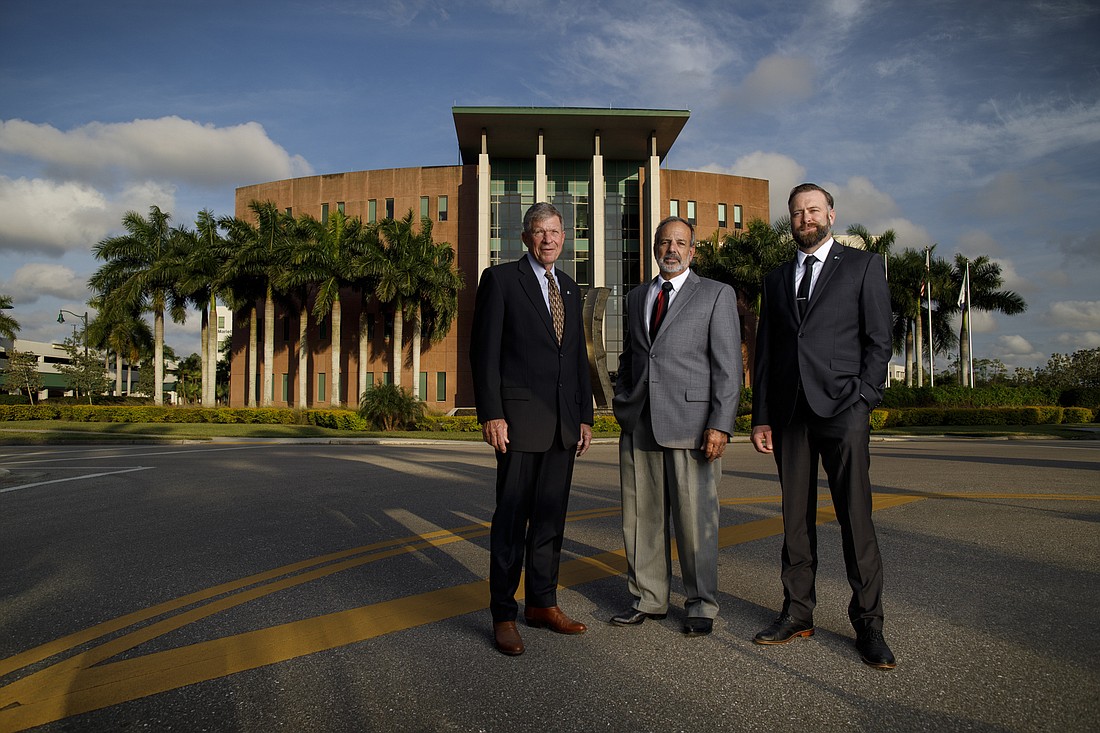- January 14, 2025
-
-
Loading

Loading

In the mid-2000s, Steve Shimp was 58 and beginning to think about retiring from his role overseeing the Florida unit of Owen-Ames-Kimball, a Michigan-based commercial builder.
The challenge? Shimp had spent the previous 25 years hyper-focused on building O-A-K into one of the leading Southwest Florida construction firms, with projects in health care, education, airports and more. That concentration paid off: starting from when Shimp opened the branch in 1982, Fort Myers-based O-A-K has become one of the largest locally based builders in the region, posting $310 million in revenue in 2020. That’s up 6.9% from $290 million in 2019. An employee-owned firm, O-A-K has some 70 employees.
Yet while the firm was growing, succession planning fell behind on the to-do list. So Shimp and the five-person Florida O-A-K board invited four of the region’s recently retired top executives to dinner in 2006 at The Veranda in Fort Myers. The plan was to meet with each individually at the tony restaurant to hear succession stories — and advice. The prominent officials O-A-K met with included a media industry CEO, a furniture store executive and someone each from construction and insurance.
‘Don’t let it be this huge secret because it’s not. Don’t kid yourself. The company is going to know, so it’s best to get out in front of it.’ Steve Shimp
“We bought them all dinner in exchange for telling us about how succession went for them,” Shimp says. “One of them just blew us away. He knew he had to retire, he knew it was time, but he was totally incapable of getting his finger out of everything.”
That dinner became a cautionary tale — and a lesson on what not to do — for Shimp and the O-A-K board. They quickly refocused to create a long-term succession plan and process, both for Shimp and future executives. That process remains in play nearly 15 years later, with the president who replaced Shimp, David Dale, recently giving way to the next president, Matthew Zwack. The leadership succession efforts at O-A-K, and how officials have refined the process, are also something of a road map for other firms, in any industry.
“It was a formalized informal transition,” Shimp says, adding, that in heeding the lesson learned at that dinner, “the challenge was to get out of Dave’s way.”
A key part of O-A-K’s succession strategy was for Shimp to avoid what he’d seen some other builders do, where the current leader just walked away at the end of the year. “On Jan. 1, a new president would take over and the old person would disappear,” says Shimp, now 73.
O-A-K, instead, went more corporate and signed Shimp to a two-year consulting contract where he worked two days a week on a reduced salary. Shimp later brought that down to one day a week, when he realized he wasn’t needed as much. Shimp’s biggest role in those years was marketing, or what he calls “shaking hands and kissing babies.”
But Shimp, in learning from the dinner he had with other executives, made a point to maintain a low profile. “I gave up the corner office and moved to the exact opposite side of the building where the project manager was,” he says. “That was an on-purpose decision.”
Another important aspect of the transition plan was communicating it. “Don’t let it be this huge secret because it’s not,” Shimp says. “Don’t kid yourself. The company is going to know, so it’s best to get out in front of it.”
Shimp, Dale and others also spent time finding the right successors. In Shimp’s case, he saw in Dale an entrepreneurial, get-it-done mindset, in addition to experience in airport and aviation work, which has since proven to be a big revenue generator for O-A-K. Dale flew crop duster planes in the 1980s, before he joined O-A-K, in 1989.
Named president in 2008, Dale began thinking about his own successor a few years ago. Some of the characteristics he sought, he says, was someone unselfish who was also versatile and can understand all aspects of the business, from the field to accounting. Dale found that, he says, in Zwack, named president in early December after a slight pandemic delay in making the move official.
Like Shimp did in 2008 when Dale took over, Dale, 62, is around but not always around. One place Dale has been in the first six months of the transition is at Southwest Florida Airport in Fort Myers everyday, overseeing a large O-A-K project there. “He’s far enough away,” says Zwack, 43, “but close enough if I need something.”
Zwack, meanwhile, is excited to be the third Florida leader for O-A-K since 1982. His plans including winning more work in health care and expanding to new disciplines, in addition to seeking work north of Fort Myers, in the Sarasota-Bradenton market and maybe Tampa-St. Petersburg. Says Zwack: “I have a lot of goals.”